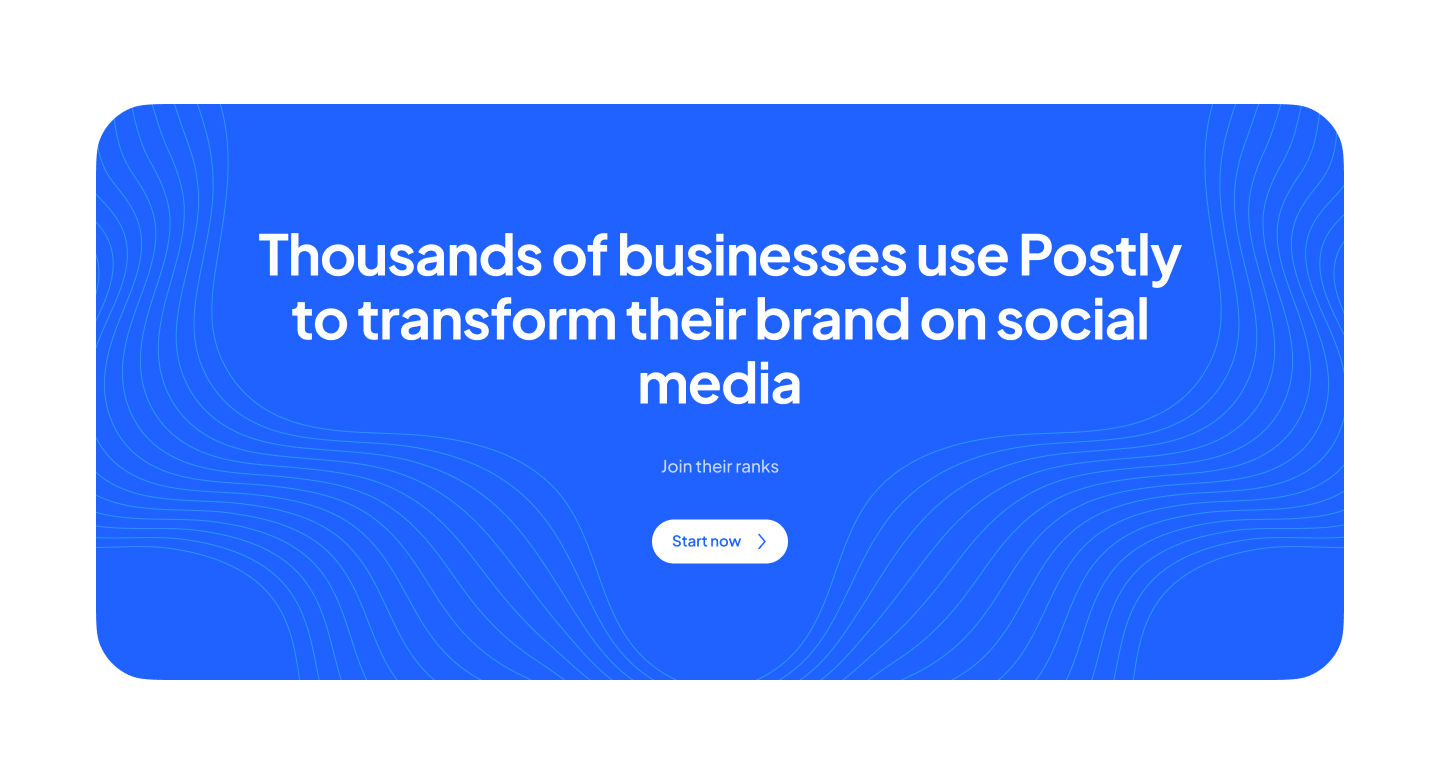Visual and Video Content - A Comprehensive Guide to Crafting Compelling Visuals and Videos

Introduction:
In today's digital age, the world of content creation has seen a dramatic shift towards visual and video content. As the saying goes, "A picture is worth a thousand words," and in the realm of digital marketing, a well-crafted video is priceless. This comprehensive guide aims to take you on a deep dive into the world of visual and video content, providing detailed explanations, creative insights, and practical tips to help you create engaging, high-quality visuals and videos that captivate your audience. We'll explore the importance of visual and video content, delve into the different types, and discuss design principles, tools, and platform-specific recommendations.
1: The Power of Visual and Video Content
The Digital Age of Visual Communication
Visual and video content has taken center stage in the digital era. We examine how it has transformed the way we consume and share information.
Benefits of Visual and Video Content
Understanding the advantages of integrating visuals and videos into your content strategy, including increased engagement, brand storytelling, and conversion rates.
Video and visual content can significantly increase conversion rates for several reasons:
- Engagement and Attention: Visual content, especially videos, grabs the viewer's attention and keeps them engaged for longer periods. The longer someone stays on your webpage or social media profile, the more likely they are to convert.
- Clarifying Complex Concepts: Visual content can simplify complex ideas or products. Explainer videos or infographics can break down intricate concepts, making it easier for potential customers to understand the value of your product or service.
- Storytelling: Visual content is a powerful medium for storytelling. By weaving a compelling narrative through video or visuals, you can emotionally connect with your audience, making them more likely to take the desired action.
- Trust Building: Visual content allows you to showcase your products or services more effectively. High-quality images and videos instill trust in your brand, as consumers can see what they are getting.
- Demonstrations and Testimonials: Videos are perfect for demonstrating how your product works or showing customer testimonials. When potential customers see the product in action or hear from satisfied customers, they are more likely to convert.
- SEO Benefits: Video content is more likely to appear in search results, increasing the visibility of your brand. A strong online presence leads to higher organic traffic and, subsequently, more conversions.
- Social Sharing: Engaging visuals or videos are more likely to be shared on social media. When your content goes viral, it reaches a broader audience, increasing the chances of conversions.
- Call to Action (CTA): You can incorporate CTAs seamlessly into videos or images. Whether it's a "Buy Now" button in a video ad or a sign-up form next to an infographic, visual content allows you to guide the viewer towards the desired action.
- Mobile Optimization: Visual and video content is mobile-friendly. With the increasing use of smartphones, this ensures that you capture the mobile audience effectively.
- Emotional Connection: Visual and video content can evoke emotions more powerfully than text. Emotional connections are a strong driver of conversion.
- User Experience: A well-designed website or landing page with visually appealing content provides a better user experience. A positive user experience can lead to higher conversion rates.
In summary, by leveraging visual and video content, you can create engaging, informative, and emotionally resonant experiences that build trust, hold your audience's attention, and guide them toward conversion actions. When executed effectively, these content types can be invaluable tools for increasing your conversion rates.
Top of Form
2: Types of Visual Content
Images
Images are the building blocks of visual content. Learn about the importance of high-quality images, including photographs, illustrations, and graphics.
Infographics
The art of conveying complex information through visually appealing and easy-to-understand infographics.
Memes
Memes are a powerful tool for humor and relatability in visual content.
Illustrations
Illustrations play a key role in the art of storytelling.
Data Visualization
Data visualization plays a crucial role in making data more accessible.
3: Types of Video Content
Vlogs
Video blogs or vlogs are a personal and engaging way to connect with your audience.
Tutorials
Creating informative and educational video tutorials requires a structured approach.
Product Demos
Showcase your products or services through engaging and visually appealing demos.
Live Streams
Live streaming is a real-time connection with your audience.
Webinars
Webinars are educational and informative video content formats.
4: Design Principles
Composition
Certainly, an examination of the principles of composition, including the rule of thirds, symmetry, and leading lines, is essential for creating visually appealing and effective designs and visuals. These principles play a crucial role in various art forms, from photography and graphic design to web design and video production.
1. The Rule of Thirds:
The Rule of Thirds is a fundamental principle of composition that involves dividing an image into nine equal parts using two equally spaced horizontal lines and two equally spaced vertical lines, creating a grid. This results in four intersection points. The main concept is to position key elements along these lines or at the intersections, rather than placing them in the center of the frame.
How it works:
- Balancing Elements: Placing your subject or focal point along one of these gridlines helps balance your composition. For example, if you're photographing a landscape, you might position the horizon along the lower third line.
- Creating Interest: This principle adds interest to your visuals by avoiding a symmetrical, centered composition. It allows viewers to explore the entire image and engage more with the content.
2. Symmetry:
Symmetry is another compositional principle that involves creating a balanced and harmonious visual by arranging elements in a mirror-like fashion. It's about dividing your composition into equal or matching parts.
How it works:
- Mirror Image: Symmetry can be achieved by creating a mirror image on either side of a central axis. Think of a butterfly with perfectly matching wings.
- Visual Impact: Symmetry can be visually striking and is often used to convey a sense of balance, stability, and perfection.
3. Leading Lines:
Leading lines are lines or shapes within your composition that lead the viewer's eye toward the main subject or focal point. These lines can be straight, diagonal, or curved, and they help create a sense of depth and perspective in your visuals.
How it works:
- Guiding the Viewer: Leading lines guide the viewer's eye deeper into the image, focusing their attention on the subject. For example, a road or pathway leading into the distance can draw the viewer into the scene.
- Conveying Movement: Diagonal or curved leading lines can add a dynamic element to your composition, suggesting motion or a journey.
These principles are not strict rules but are rather guidelines that help create visually appealing and engaging compositions. Successful design often involves a creative and thoughtful application of these principles to convey the desired message or emotion. Whether you're taking a photograph, designing a website, or creating social media visuals, understanding these principles can significantly enhance your work and captivate your audience.
Color Theory
The psychology of colors, color schemes, and how to effectively use color to convey your message is a fascinating aspect of design and communication. Colors can evoke strong emotions, influence decisions, and shape perceptions. Understanding the psychology behind colors and how to use them effectively is crucial for various aspects of design, marketing, and branding.
The Psychology of Colors:
- Red: This color is associated with strong emotions like love, passion, and anger. It can create a sense of urgency, making it suitable for clearance sales or calls to action.
- Blue: Blue is often linked to trust, reliability, and calmness. It's a popular choice for corporate branding, especially in the tech and financial sectors.
- Green: Green symbolizes health, growth, and nature. It's commonly used in the health and environmental industries. Lighter greens can represent relaxation and peacefulness.
- Yellow: Yellow is bright and attention-grabbing. It conveys feelings of happiness, positivity, and energy. It's often used for brands targeting a youthful audience.
- Orange: This color combines the energy of red and the happiness of yellow. It's often associated with enthusiasm, creativity, and attraction.
- Purple: Historically, purple has been associated with royalty and luxury. It also represents mystery and spirituality. Brands often use it to convey a sense of opulence and sophistication.
- Black: Black is often used to represent luxury, elegance, and power. It's a common choice in high-end fashion and luxury brands.
- White: White is associated with purity, simplicity, and cleanliness. It's commonly used in healthcare and technology branding.
Color Schemes:
Effective use of color also involves selecting the right color schemes. Several color schemes can guide your design:
- Monochromatic: This scheme uses variations in lightness and saturation of a single color. It creates a clean and elegant look.
- Analogous: Analogous colors are next to each other on the color wheel. They create harmony and are often found in nature.
- Complementary: Complementary colors are opposite each other on the color wheel. They provide a high contrast and can be attention-grabbing.
- Triadic: This scheme uses three colors equally spaced on the color wheel. It offers a balance between contrast and harmony.
- Split-Complementary: Similar to the complementary scheme but with slight variations. It provides a high contrast without the harshness of complementary colors.
- Double Split-Complementary: It's a more complex version of the split-complementary scheme, using two pairs of complementary colors. It provides even more variety and contrast.
Effectively Using Color to Convey Your Message:
- Understand Your Audience: Different colors resonate with different demographics. Know your target audience and use colors that appeal to them.
- Consistency: Establish a consistent color scheme for your brand. Consistency in color helps with brand recognition.
- Contrast: Use color contrast to draw attention to key elements. For example, use a bright color for your call-to-action buttons.
- Emotion Matching: Match the emotional message you want to convey with the right color. If your message is about trust, use blue. If it's about excitement, consider red or yellow.
- Cultural Considerations: Be aware that colors can have different cultural meanings. For instance, white is associated with mourning in some Asian cultures, while red is a color of luck.
- Test and Adapt: Don't be afraid to test different color schemes and gather feedback. A/B testing can help determine which colors work best for your specific goals.
In conclusion, color psychology and effective use of color schemes are powerful tools in design, branding, and marketing. By understanding the emotions and associations linked to different colors and using them strategically, you can convey your message more effectively and create a strong visual impact.
Typography
Typography is crucial for readability and visual appeal. Learn about font selection, hierarchy, and best practices for text in visuals and videos.
Font selection, hierarchy, and best practices for text in visuals and videos are essential elements of design that significantly impact how your content is perceived and understood. Let's delve into these aspects:
1. Font Selection:
Choosing the right fonts is a critical decision in the design process. Different fonts convey distinct moods and aesthetics. Here are some key considerations for font selection:
- Readability: Above all, your chosen font must be easily readable. Avoid overly decorative or complex fonts, especially for longer text. Opt for fonts that are legible both in large and small sizes.
- Consistency: Maintain a sense of consistency in your branding by using a limited number of fonts. Typically, designers use two to three fonts: one for headings, one for subheadings, and one for body text.
- Appropriateness: Select fonts that align with your brand and message. For instance, a playful script font might work well for a bakery but not for a law firm.
- Web-Safe Fonts: If your design will be used online, consider using web-safe fonts that are universally supported to ensure consistency across different devices and browsers.
- Contrast: Choose fonts that create a pleasing contrast. Combining a serif font with a sans-serif font can create an appealing visual hierarchy.
2. Hierarchy:
Text hierarchy is about guiding the viewer's eye to prioritize information in a specific order. It's particularly crucial for conveying your message effectively. Here's how to establish hierarchy:
- Size: Use font size to distinguish different levels of information. Larger fonts often indicate headings or primary content, while smaller fonts are suitable for subtext or details.
- Weight: Bold or italicize text to emphasize key points. For example, headings are often in bold, while regular text is in a standard weight.
- Color: Text color can be used to establish hierarchy. Important information can be in a contrasting color to draw attention.
- Spacing: Adjust line spacing (leading) and letter spacing (kerning) to impact the overall layout and readability. For instance, increasing line spacing in body text can enhance readability.
- Placement: Where you position text also influences hierarchy. Centered text, for instance, can signify importance, while left-aligned text is typically used for body content.
3. Best Practices for Text in Visuals and Videos:
When incorporating text in visuals and videos, you must consider the medium's unique characteristics. Here are some best practices:
- Short and Sweet: Keep text concise. In most cases, less is more. Aim for clarity and brevity to avoid overwhelming your audience.
- Consider the Background: Ensure that your text contrasts with the background. For instance, dark text is more readable on a light background, and vice versa.
- Typography Consistency: Maintain a consistent font and style throughout your visuals and videos to reinforce brand identity.
- Animation and Timing: In videos, carefully plan text animations. Ensure that text appears long enough for viewers to read but not so long that it becomes distracting.
- Legibility: Test your visuals and videos on different screen sizes and resolutions to ensure legibility in all situations.
- Mobile Optimization: As a significant portion of content consumption happens on mobile devices, optimize your text for mobile screens to avoid readability issues.
- Subtitle Accessibility: If you're creating video content, consider adding subtitles or closed captions. This not only assists viewers with hearing impairments but also makes your content more accessible and comprehensible to a wider audience.
When designing visuals or videos, don't underestimate the power of typography. The right font choices and text hierarchy can enhance the impact of your content and convey your message effectively to your audience. It's a key component of successful design and communication.
5: Tools and Software
Graphic Design Software
Explore popular graphic design software like Adobe Photoshop, Illustrator, and free alternatives like Canva and GIMP as well as AI-powered tools like Postly’s Image Editor.
Video Editing Software
A comprehensive guide to video editing software, including Adobe Premiere Pro, Final Cut Pro, and free options like DaVinci Resolve as well as AI-powered tools like Postly’s Video Editor.
Stock Images and Videos
Find high-quality stock images, videos, and music for your visual and video content.
6: Tips for Compelling Visuals
Achieving harmony in your designs is essential for creating visually pleasing and effective compositions. Harmony ensures that all the elements in your design work together cohesively, resulting in a balanced and unified visual experience. Here are some key principles and techniques to help you achieve harmony in your designs:
1. Balance:
- Balance is one of the fundamental principles of design. There are two types of balance: symmetrical and asymmetrical.
- Symmetrical balance involves arranging elements evenly on both sides of a central axis. It creates a sense of stability and formality.
- Asymmetrical balance involves distributing elements unequally but achieving equilibrium through contrast and visual weight. It can be more dynamic and interesting.
2. Contrast:
- Contrast is about creating differentiation between elements. It helps draw the viewer's attention to specific focal points.
- Use contrast in color, size, shape, texture, and other visual elements to highlight key content or features.
3. Unity:
- Unity is the principle of making all elements in a design feel like they belong together. This can be achieved through consistent use of color schemes, fonts, and styles.
- Ensure that all design elements support a common theme or message.
4. Repetition:
- Repetition creates consistency in a design. Repeating colors, shapes, patterns, or styles throughout your design reinforces the sense of unity.
- It also helps establish a visual rhythm and guides the viewer's eye through the content.
5. Alignment:
- Proper alignment ensures that elements are positioned in relation to each other. Aligning elements along a grid or a common axis adds structure and clarity to your design.
- Consistent alignment makes the content more organized and easier to understand.
6. Proximity:
- Group related elements together by placing them in close proximity. This indicates their connection and relevance.
- Proper grouping and spacing enhance the organization and flow of information.
7. Color Harmony:
- Color harmony involves selecting a color scheme that works well together. Common color harmonies include complementary, analogous, triadic, and monochromatic.
- A well-chosen color palette contributes to the overall visual appeal of the design.
8. Simplicity:
- Simplicity is the concept of keeping designs clean and uncluttered. Eliminate unnecessary elements that don't contribute to the message or aesthetics.
- Minimalism is often associated with simplicity and can be very effective in achieving harmony.
9. Scale and Proportion:
- Scale and proportion refer to the relationship between different elements in terms of size. Consistent scaling ensures that elements are proportional and balanced.
- A varying scale can be used to create focal points or hierarchy.
10. White Space:
- White space (or negative space) is the empty space around or between elements in a design. It helps prevent overcrowding and improves legibility.
- Effective use of white space provides breathing room for the content and contributes to harmony.
11. Consistency:
- Consistency in typography, layout, and design elements is crucial for maintaining harmony.
- Establish a style guide for your designs to ensure uniformity across different pieces of content.
12. Feedback and Revisions:
- Seek feedback from colleagues, clients, or target audience members. Their input can help identify areas where harmony can be improved.
- Be open to making revisions to enhance the overall harmony of your design.
Harmony in design doesn't mean everything has to be identical or monotonous. It's about creating a sense of visual order, balance, and connection that enhances the viewer's experience. Mastering these principles will help you produce designs that are not only visually appealing but also effective in conveying your intended message.
Conclusion
Visual and video content has become an integral part of our online experience. This comprehensive guide has equipped you with the knowledge and practical tips needed to succeed in a visual-first world. Whether you're a brand, content creator, or marketer, you're now better prepared to create compelling visuals and videos that captivate your audience. By understanding the power of visual and video content and mastering the art of design, storytelling, and engagement, you can stand out in a visually driven digital landscape. Unlock the potential of visual and video content, and watch your audience connect with your message in a more impactful and engaging way.





